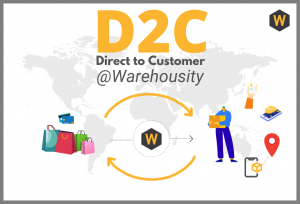Opening the Tricks to Efficient D2C Performance Advertising Campaigns
Effective D2C efficiency marketing projects pivot on a detailed understanding of the target market. Brand names should not just set clear, measurable objectives yet additionally craft ad creatives that resonate deeply with consumers. Using information analytics can reveal useful understandings. The real difficulty exists in selecting the right advertising channels and continuously optimizing strategies. As companies endeavor for client commitment, the methods they utilize can greatly influence their success - D2C Agency. What strategies will prove most efficient?
Understanding Your Target Market
Just how can brands successfully get in touch with customers in a congested market? Comprehending the target audience is essential for brands aiming to stick out. This entails substantial research to identify demographics, preferences, and pain points. By utilizing surveys, social media analytics, and emphasis teams, brands can collect valuable understandings that shape their marketing strategies.A clear understanding of the target market permits brand names to customize messaging and product offerings to satisfy particular requirements. Segmenting the target market right into unique teams allows tailored advertising and marketing efforts, cultivating a sense of connection and loyalty. In addition, brand names can make use of behavior data to anticipate future acquiring behaviors and preferences, assisting in aggressive engagement.In an atmosphere saturated with options, a deep comprehension of the target audience equips brand names to craft pertinent web content and experiences, ensuring they reverberate with customers. This foundational understanding acts as a springboard for effective advertising and marketing projects that line up with customer expectations and needs.
Establishing Clear Objectives and Goals
Setting clear objectives and goals is vital for effective D2C performance advertising. D2C & Ecommerce Performance Marketing Agency. Establishing Key Efficiency Indicators (KPIs) permits companies to determine success and warranty alignment with overarching approaches. This focus on objective positioning not only improves advertising and marketing initiatives yet additionally drives total business growth
Define Key Efficiency Indicators
Trick Efficiency Indicators (KPIs) serve as crucial metrics for measuring the success of Direct-to-Consumer (D2C) performance advertising and marketing initiatives. By developing clear KPIs, services can measure their advertising purposes, allowing an organized strategy to performance assessment. Common KPIs in D2C campaigns include consumer purchase expense, conversion rates, and return on advertisement invest, each giving distinct insights into campaign efficiency. In addition, keeping an eye on metrics such as customer lifetime worth and involvement rates can aid marketers identify trends and areas for renovation. Establishing these signs allows companies to assess progress, make educated decisions, and enhance advertising and marketing approaches to boost overall performance. Inevitably, distinct KPIs are essential for straightening advertising and marketing efforts with desired business outcomes in the affordable D2C landscape.
Align Goals With Technique
While lining up objectives with approach is essential for any advertising and marketing campaign, it is specifically vital in the domain of Direct-to-Consumer (D2C) performance advertising and marketing. Clear objectives give a roadmap for projects, guaranteeing that all initiatives are focused and measurable. D2C brand names should develop specific, attainable objectives that resonate with their target market, such as increasing client procurement or improving brand name commitment. By integrating these goals into their total strategy, marketing professionals can successfully allocate resources and enhance campaigns for maximum effect. Additionally, routinely reviewing and adjusting goals in response to performance information enables active marketing methods, making certain that brands continue to be affordable in a swiftly evolving marketplace. Inevitably, goal placement drives sustained growth and success in D2C performance marketing.
Crafting Compelling Ad Imaginative
In the domain of D2C performance advertising, crafting compelling advertisement creative is crucial for recording target market attention. Utilizing aesthetic narration methods can successfully share brand narratives, while approaches that cultivate emotional links enhance viewer engagement. With each other, these strategies can greatly elevate a project's influence and drive consumer action.
Aesthetic Storytelling Methods

Psychological Connection Methods
What drives customers to involve with a brand on a psychological degree? Emotional link strategies play a pivotal function in crafting engaging advertisement creative that resonates with target markets. By leveraging storytelling, brands can evoke feelings of empathy, nostalgia, or joy, developing a memorable experience. Making use of real-life situations and relatable characters enables consumers to see themselves within the story, promoting a sense of belonging. Additionally, including genuine testimonies and user-generated material can enhance count on and reputation. Aesthetic elements, such as color and imagery, additionally add to the emotional tone, influencing understandings and feedbacks. Eventually, brand names that focus on psychological engagement not just record attention but additionally grow long-term relationships, driving commitment and encouraging repeat acquisitions in the competitive D2C landscape.
Leveraging Information and Analytics
While numerous brand names acknowledge the importance of information in shaping marketing methods, leveraging information and analytics successfully can establish direct-to-consumer (D2C) services apart in a competitive landscape. By utilizing customer information, D2C brands can get insights into consumer habits, choices, and buying patterns. This info permits them to tailor their advertising and marketing initiatives, guaranteeing individualized experiences that reverberate with their target audience.Moreover, progressed analytics tools allow D2C firms to track key performance signs (KPIs) in genuine time, maximizing projects on the fly. By Learn More analyzing metrics such as conversion rates, client purchase prices, and return on advertisement invest, brand names can allocate resources a lot more successfully and improve their messaging.In enhancement, data-driven division aids recognize niche markets, enabling targeted promotions that enhance engagement and sales. Ultimately, utilizing data and analytics not only improves advertising efficiency however likewise promotes lasting client partnerships, strengthening a brand's standing in the D2C field.
Choosing the Right Advertising Channels
Identifying which advertising channels to prioritize can greatly influence a D2C brand name's success. Each network uses distinct benefits and reaches distinct target markets, making it vital for brands to align their methods with their target demographics. Social media site platforms, such as Instagram and Facebook, offer possibilities for involving visuals and straight communication, appealing particularly to younger consumers. Email advertising continues to be an effective device for tailored communication, driving customer retention and loyalty.Additionally, online search engine advertising allows brand names to capture intent-driven website traffic, drawing in potential consumers actively looking for products. Influencer collaborations can magnify reach and trustworthiness, particularly in niche markets. Brand names ought to likewise think about the cost-effectiveness of each channel, measuring potential returns against their advertising spending plans. By carefully picking and integrating these channels, D2C brands can create a effective and natural advertising technique that resonates with their target market while optimizing their sources for optimal effect.
A/B Checking for Constant Improvement
After selecting suitable marketing networks, D2C brands can improve their performance via A/B screening. This approach permits brand names to compare two variants of an advertising asset-- such as an email, landing page, or ad-- to determine which executes far better. By analyzing metrics like conversion prices, click-through prices, and client involvement, brand names can make data-driven decisions that maximize their campaigns.A/ B screening promotes a society of constant enhancement, urging brand names to trying out different elements, such as headlines, pictures, or contacts us to activity. This iterative procedure not just boosts customer experience yet also maximizes return on financial investment. Notably, A/B screening should be systematic, concentrating on one variable at a time to isolate its impact successfully. As D2C brand names accept this method, they can fine-tune their techniques, eventually leading to much more effective advertising campaigns and improved consumer procurement end results.
Structure Client Loyalty and Retention
Building customer commitment and retention is necessary for D2C brands intending to sustain long-lasting success in a competitive marketplace. Developing a solid connection with customers enhances brand name commitment and motivates repeat purchases. Reliable methods include customized marketing, commitment programs, and remarkable customer care. By using data analytics, brand names can customize interactions and offers to fulfill individual customer choices, cultivating a feeling of belonging.Moreover, constant involvement via social networks and email projects maintains the brand top-of-mind. Openness in procedures, such as moral sourcing and sustainability techniques, can even more enhance depend on and loyalty. Urging user-generated material and reviews additionally encourages clients, making them really feel valued and appreciated. Inevitably, buying customer experiences and developing a community around the brand name can meaningfully improve retention rates. As commitment strengthens, brand names take advantage of lowered acquisition expenses and increased client life time value, strengthening their placement in the marketplace.
Frequently Asked Concerns
What Budget Should I Assign for My D2C Marketing Campaigns?
Figuring out a suitable allocate D2C marketing campaigns entails analyzing target market size, system prices, industry criteria, and preferred reach. An adaptable approach permits modifications based on project efficiency and developing market problems.
Exactly how Commonly Should I Refresh My Ad Creative?

What Are Usual Mistakes in D2C Performance Advertising?
Usual blunders in D2C performance marketing consist of disregarding audience segmentation, stopping working to examine project information, irregular messaging throughout networks, neglecting mobile optimization, and not checking various creatives, which can prevent total campaign effectiveness and growth.
Exactly How Can I Determine Brand Understanding From My Campaigns?
Gauging brand awareness from campaigns involves evaluating metrics such as reach, perceptions, engagement prices, and study feedbacks. Tracking social media mentions and website traffic can also supply understandings right into the performance of advertising efforts.
Should I Utilize Influencers for My D2C Marketing Strategy?
The decision to make use of influencers in an advertising and marketing strategy depends upon target market placement and campaign goals. Influencers can boost reach important site and reputation, however efficiency differs based upon sector and target market interaction levels. Cautious choice is vital. By utilizing surveys, social media analytics, and emphasis teams, brand names can gather valuable insights that form their marketing strategies.A clear understanding of the audience allows brands to customize messaging and product offerings to fulfill specific requirements. Additionally, brand names can use behavioral data to anticipate future acquiring practices and preferences, assisting in proactive engagement.In an atmosphere filled with alternatives, a deep understanding of the target audience empowers brand names to craft pertinent material and experiences, ensuring they reverberate with consumers. D2C brand names need to develop particular, achievable goals that reverberate with their target audience, such as enhancing customer acquisition or boosting brand name commitment. By examining metrics like conversion prices, click-through rates, and client involvement, brands can make data-driven decisions that maximize their campaigns.A/ B screening promotes a culture of constant improvement, motivating brand names to experiment with various components, such find as headlines, photos, or calls to activity. By utilizing information analytics, brand names can tailor communications and deals to meet specific consumer choices, cultivating a sense of belonging.Moreover, consistent involvement through social media and email projects keeps the brand top-of-mind.